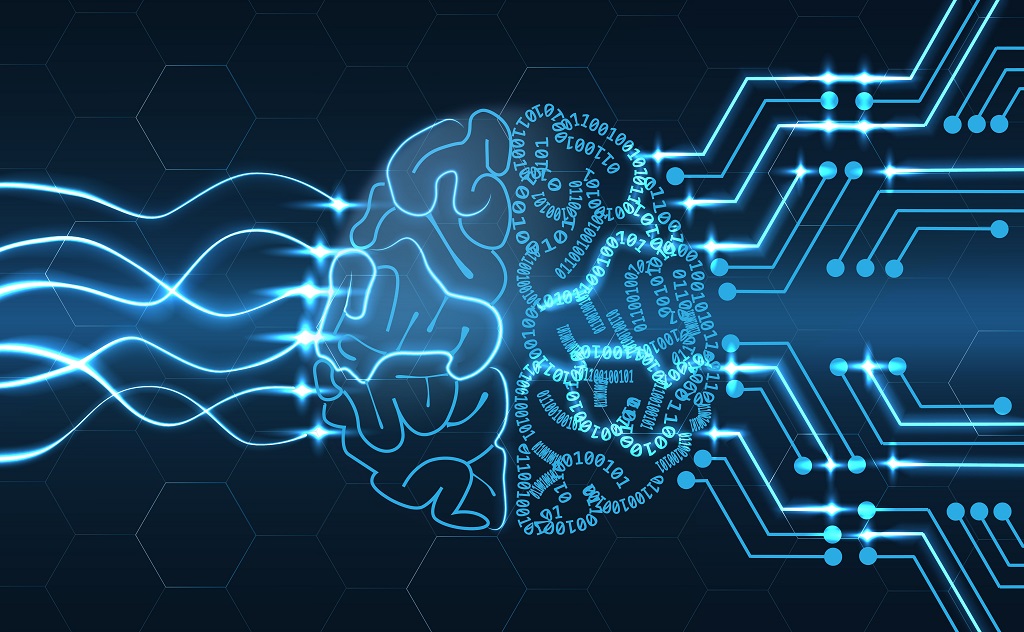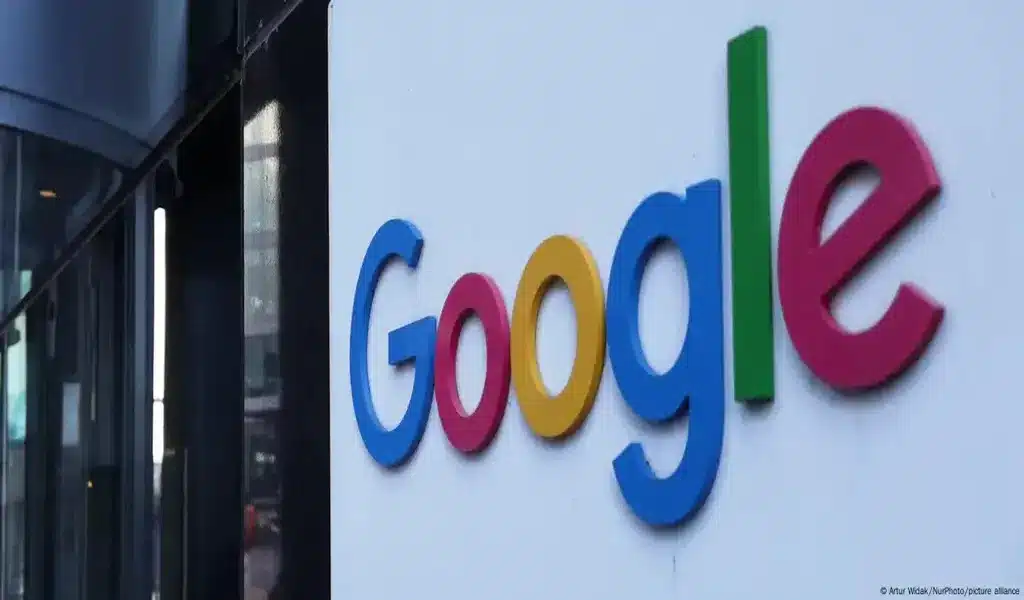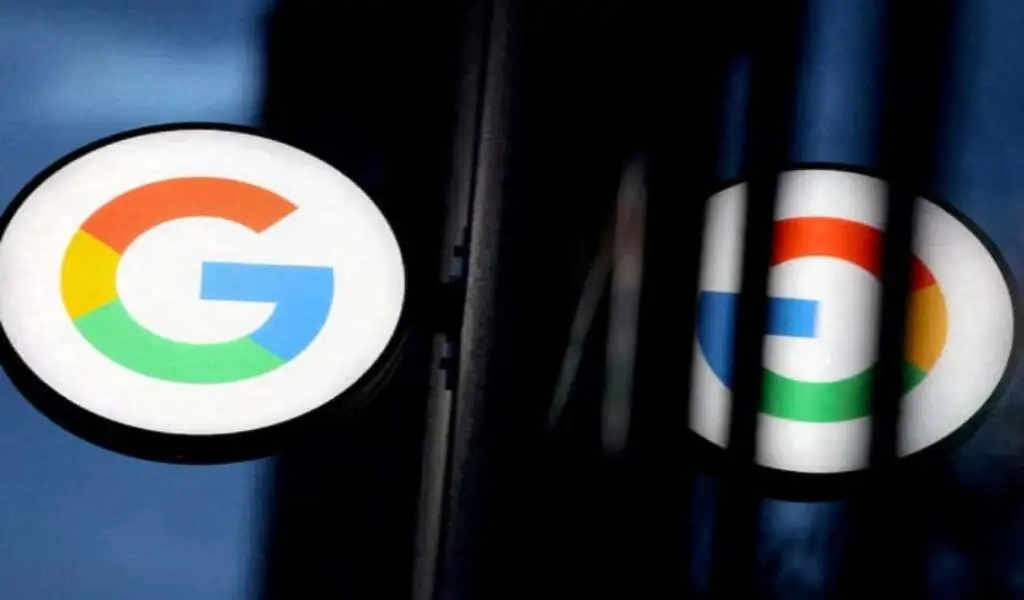Tech
Data Extraction Redefined: AI Meets No-Code in 2023

The realm of data extraction has witnessed a metamorphosis like no other. Where once manual processes reigned supreme, we now find ourselves amidst a revolution led by no-code platforms and AI-driven solutions.
This evolution doesn’t merely represent technological advancement; it symbolizes a shift in accessibility, precision, and efficiency. Dive into this exploration of how we’ve transitioned from traditional data collection methods to the cutting-edge techniques of today, and discover the twin titans propelling this change: no-code platforms and AI-driven solutions.
Evolutionary Steps in Data Extraction
Data extraction, in its essence, has always been about gleaning valuable information from a sea of data. In the early days, this process was painstakingly manual. Researchers and data analysts would comb through pages of information, manually recording data points of interest. However, with the advent of technology, automation began playing a pivotal role.
Web scraping tools emerged, allowing for automated data collection from websites. But this was just the beginning. The real transformative shift happened with the convergence of technological advancements and the increasing demand for data. This led to the emergence of state-of-the-art automated techniques that we witness today, marking significant evolutionary milestones in the realm of data extraction.
The Twin Pillars: No-Code Platforms and AI-driven Solutions
The modern landscape of data extraction is dominated by two groundbreaking innovations: No-code platforms and AI-driven solutions.
No-code platforms, like Zapier, Make, have democratized data extraction. These user-friendly tools empower even those without a technical background to set up and run complex data extraction tasks. With intuitive interfaces and drag-and-drop functionalities, no-code platforms have bridged the gap between complex data tasks and user accessibility.
On the other hand, AI-driven solutions have brought in a level of precision and intelligence previously unimaginable. By leveraging machine learning and advanced algorithms, these solutions can adapt, learn, and optimize their data extraction techniques. They can navigate through dynamic websites, understand context, and extract data with unparalleled accuracy.
Together, these twin pillars stand as a testament to the leaps and bounds the field of data extraction has made, promising an even more revolutionary future.
Elevating User Experience in Data Tasks
The introduction of no-code platforms has been nothing short of revolutionary for the user experience in data tasks. These platforms have eradicated the need for extensive technical know-how, inviting a broader audience to participate in what was once a niche domain.
By offering intuitive interfaces, users can now navigate complex data environments with ease. Drag-and-drop functionalities, visual workflows, and template-driven approaches have transformed data extraction into a more accessible and user-friendly task.
These advancements have empowered professionals from diverse backgrounds, from marketers to researchers, to harness the power of data without being bogged down by technical intricacies. In essence, the democratization of data tasks is in full swing, and the user experience stands elevated like never before.
AI: The Gold Standard in Data Accuracy
If no-code platforms have democratized data extraction, AI has refined it to an art form. Data extraction’s primary challenge has always been accuracy. With vast amounts of data and ever-changing web environments, ensuring that the extracted data is accurate and relevant is paramount.
Enter AI. With its machine learning capabilities and advanced algorithms, AI-driven solutions have set new benchmarks in data accuracy. These systems are capable of contextual understanding, allowing them to discern between relevant and irrelevant data points.
Moreover, AI solutions can adapt to dynamic web structures, ensuring that they remain efficient even when faced with website updates or changes.
But it’s not just about precision. AI-driven solutions offer consistency, ensuring that every data extraction task maintains the highest quality standards, making AI the undisputed gold standard in data accuracy.
Identifying Potential Pitfalls in No-Code Platforms
While no-code platforms have revolutionized the landscape of data extraction, making it accessible to a wider audience, they aren’t without their challenges. One of the primary pitfalls is the potential sacrifice of depth for simplicity. While these platforms excel in offering user-friendly interfaces, there can be limitations in customizability and the depth of data extraction capabilities.
Another concern is scalability. As businesses grow and data requirements expand, some no-code platforms may struggle to keep up, leading to inefficiencies or the need for additional tools. Moreover, the reliance on templates and pre-defined workflows can sometimes lead to generic outputs, lacking the unique insights a business may seek.
Lastly, there’s the issue of over-reliance. As more and more individuals turn to no-code platforms, there’s a potential risk of sidelining the importance of understanding underlying data structures and nuances, which could be crucial in specific analytical scenarios.
AI’s Transformative Role in Data Extraction
Artificial Intelligence, with its self-learning algorithms and adaptability, has seamlessly filled the gaps left by other data extraction methodologies, including no-code platforms. AI’s transformative role is evident in its ability to handle vast volumes of dynamic data in real-time, ensuring that businesses always have their finger on the pulse.
One of AI’s standout features is its ability to understand context. Unlike traditional data extraction tools that follow rigid patterns, AI-driven systems can discern between subtle variations, ensuring more accurate and relevant data extraction. This is especially crucial in today’s web environment, where content is dynamic, and user-generated content is abundant.
Furthermore, AI’s predictive capabilities mean that it can anticipate changes, adapt to new data structures, and even forecast trends based on extracted data. This not only streamlines the extraction process but also adds a layer of forward-thinking analytics to the mix.
In essence, while no-code platforms have democratized the process of data extraction, AI is refining it, ensuring that the data extracted is not just abundant, but also accurate, relevant, and insightful.
Predictive Analysis: Upcoming Innovations and Shifts
The horizon of data extraction holds promise and anticipation. With technology’s rapid evolution, predictive analysis suggests a slew of innovations poised to redefine our current understanding. Augmented Reality (AR) and Virtual Reality (VR) are anticipated to integrate with data extraction tools, offering immersive experiences and revolutionizing how we visualize and interpret data.
Moreover, the fusion of quantum computing with AI can lead to extraction speeds and accuracies previously deemed impossible. We’re also on the brink of witnessing more ‘self-aware’ tools that can autonomously refine their algorithms based on feedback, ensuring continuous improvement without human intervention.
But beyond just technological innovations, there’s a paradigm shift in how we approach data. The future beckons a more ethical and responsible data extraction methodology, with emphasis on user privacy and data security.
Concrete Insights: Drawing from Real-World Successes
The transformative power of no-code platforms and AI in data extraction isn’t just theoretical; it’s evidenced by numerous real-world successes. Industries ranging from e-commerce to healthcare have harnessed these technologies, optimizing their operations and gaining invaluable insights.
For instance, e-commerce giants have utilized AI-driven data extraction to analyze user behavior, refining their marketing strategies and boosting sales. Similarly, healthcare institutions have employed no-code platforms to aggregate patient data, improving diagnostics and treatment plans.
These success stories underscore the practical benefits and vast potential of integrating no-code and AI-driven methodologies in data extraction, offering lessons in optimization, adaptability, and innovation.
Conclusion
The journey of data extraction, from its humble beginnings to the sophisticated landscape of today, is a testament to human ingenuity and the relentless pursuit of optimization. As we stand on the cusp of further innovations, it becomes imperative to not only embrace these advancements but also to approach them responsibly.
The fusion of no-code platforms with AI-driven solutions has set the stage for a future where data isn’t just extracted but is also understood, valued, and utilized to its fullest potential. As we move forward, the onus is on us to harness this power judiciously, ensuring a future where technology serves humanity, and not the other way around.

Tech
US: A Judge Mandates that Google Allow Competing App Stores to Access Android

(VOR News) – The ruling is that Google, the greatest technology firm in the world, is required to make its Android smartphone operating system available to merchants that supply applications that are in direct rivalry with Google’s. This decision was reached by a judge in the United States of America.
The Android Play store, which is owned and operated by Google, was found to be an example of an illegal monopoly arrangement by a jury in the state of California on Monday. The finding was reached by a jury. Monday is the day that this decision was come to.
An earlier federal judge ruled Google’s search engine illegal.
This finding, which came after that decision, has forced the company to suffer yet another setback. As a result of the corporation having already encountered its initial obstacle, this decision has been established. This particular decision was made by the judge during the month of August, when the month was in progress.
In light of the fact that the decision was made, what exactly does it mean that the choice was accepted?
In accordance with the verdict, Google is obligated to make it possible for users to download Android app stores that are offered by third-party competitors. For a period of three years, the corporation is prohibited from imposing restrictions on the usage of payment mechanisms that are integrated into the application.
In addition, it is important to keep in mind that Google does not possess the right to impose restrictions on the utilization of ways to make payments online.
Additionally, the verdict makes it unlawful for Google to give money to manufacturers of smartphones in order to preinstall its app store. Smartphone manufacturers are prohibited from doing so.
Furthermore, it prevents Google from the possibility of sharing the revenue that is generated by the Play store with other companies that are in the industry of delivering mobile applications.
In addition to this, the court has mandated the establishment of a technical committee that will be made up of three different people chosen at random.
The committee will be responsible for monitoring the implementation of the reforms and finding solutions to any disagreements that may occur as a consequence of the implementation of the reforms while they are being implemented. This task will fall under the committee’s purview so that it may fulfill its duties.
However, certain components were allowed to be put into action until July 1st, despite the fact that the judge’s statement suggested that the ruling would take effect on November 1st. The statement was the basis for the ruling, which ultimately became effective.
Particularly, I wanted to know what Google’s reaction would be.
There is a fact that Google does not adhere to this directive, which has been brought to their attention. This document argued that the alterations that the judge had ordered to be made would “cause a range of unintended consequences that will harm American consumers, developers, and device makers.”
The judge had ordered the modifications to be implemented. The alterations were to be carried out as indicated by the judge’s ruling. The judge made it clear that he expected these revisions to be carried out in accordance with his guidance.
The company’s regulatory affairs vice president, Lee-Anne Mulholland, provided the following statement: “We look forward to continuing to make our case on appeal, and we will continue to advocate for what is best for developers, device manufacturers, and the billions of Android users around the world.”
On average, over seventy percent of the total market for smartphones and other mobile devices is comprised of mobile devices that are powered by the Android operating system. Both smartphones and other small mobile devices are included in this category.
In the event that the Play app store continues to be shown on the home page and that other Google applications are pre-installed prior to the installation of the Android application, smartphone manufacturers are entitled to install the Android application at no cost at their discretion.
Additionally, the Android application can be installed on devices that are manufactured for smartphones.
SOURCE: DWN
SEE ALSO:
Over The Planned “Link Tax” Bill, Google Threatens to Remove NZ News Links.
Tech
WhatsApp Now Features a “Mention” Tool for Status Updates and Stories.

(VOR News) – Those who use WhatsApp now have the ability to mention other people in their stories or status updates as a consequence of a feature that was only recently enabled on the platform.
Previous to this point, this capability was not available. It wasn’t until quite recently that this capability became available to the public.
According to the information that was provided by the company, users now have the opportunity to tag close friends in their stories, and the person who is mentioned will have the option to go back and re-share an earlier version of that story. This information was provided by the company. The corporation was kind enough to reveal this information to us.
Because of a new feature that has been added to the WhatsApp app, users now have the opportunity to like individual stories and status updates.
This capability was previously unavailable to WhatsApp users.
A significant amount of progress has been made in this context. Alternative readers now have the chance to “like” a work, which is comparable to liking a post on Facebook. This feature was introduced in recent years. When compared to the past, this is a tremendous shift.
At one point in time, viewers were only permitted to observe the total number of views that a particular story had gotten. These restrictions were eliminated in later versions of the software.
Additionally, it is essential that the likes and reactions to a story be kept anonymous during the entire process. One of the factors that contributes to the general mystery that surrounds this characteristic is the fact that this is one of the elements.
The person who brought it to the attention of others is the only person who will be able to judge who enjoyed it and who did not care about it. These individuals will be able to make this determination.
A notification will be issued to the individual who was referenced earlier in the sentence and who was named in the story or status update that was discussed. A notification of this nature will be sent to the individual via WhatsApp.
This message will be sent to the user in question whenever that person makes a reference to another person while they are in the process of elaborating on a narrative or updating their status. You will receive a notification alerting you that you have been tagged in the narrative.
This notification will be delivered to the person who receives this message. In addition, students will be provided with the opportunity to re-share the tale for themselves.
It is important to note that if the names of individuals who have been referenced in a narrative or a status update are included in any of these, then the names of those individuals will not be accessible to any third party through any of these. In light of the fact that the identities of those individuals will be concealed from public disclosure, this is the condition that will be required.
While WhatsApp recently made the announcement that it will be incorporating this functionality, it is highly likely that not all users will have access to it at the same time.
This is despite the fact that WhatsApp recently made this announcement.
Despite the fact that WhatsApp has only recently made a public announcement that it will move forward with the deployment, this is the situation that has presented itself.
As soon as a short period of time has elapsed, access will be made available to each and every person on the entire world.
Additionally, WhatsApp has hinted that new functionalities might be introduced to the status and updates tab in the future months.
The purpose of these capabilities is to provide users with assistance in maintaining healthy connections with the individuals who play a vital role in their living experiences. This is done in order to give users with support in maintaining close relationships with the folks who are the subject of the inquiry.
It is with the purpose of supporting users in successfully keeping close ties with the individuals in question that this step is taken.
SOURCE: DN
SEE ALSO:
Over The Planned “Link Tax” Bill, Google Threatens to Remove NZ News Links.
Accenture and NVIDIA Collaborate to Enhance AI Implementation.
Tech
Over The Planned “Link Tax” Bill, Google Threatens to Remove NZ News Links.

(VOR News) – Google has sent a strong message to the New Zealand government, threatening to stop boosting local news content should the Fair Digital News Bargaining Bill become law.
The law, put up by the Labour government and backed by the coalition in power at the moment, mandates that digital companies such as Google pay back news organizations for links to their material.
News publishers, on the other hand, charge the tech giant with “corporate bullying.”
Google says this measure may have unanticipated effects.
Google New Zealand’s country director, Caroline Rainsford, voiced her worries that the law, which is being referred to as a “link tax,” is not doing enough to support the media industry in New Zealand right now.
She underlined that Google would have to make major adjustments if the previously mentioned law were to pass, including cutting off links to news articles from its Search, News, and Discover platforms and cutting off financial ties with regional publications.
According to Rainsford, similar legislation has been proposed and approved in other nations including Australia and Canada, but it has not been proven to be effective there and breaches the principles of the open web.
She drew attention to the fact that smaller media outlets will be most negatively impacted, which will limit their capacity to reach prospective audiences.
Google says its alternative options will protect smaller, local media from negative effects.
Conversely, it conveys apprehension regarding the possible fiscal obligations and vagueness of the legislation, which it feels generates an intolerable level of ambiguity for enterprises functioning within New Zealand.
The New Zealand News Publishers Association (NPA) has reacted to Google’s warnings by alleging that the internet behemoth is using coercive tactics.
They specifically contend that the need for regulation stems from the market distortion that Google and other tech giants have created, which has fueled their expansion into some of the most significant corporations in global history.
The legislation aims to create a more equal framework that media businesses can use to negotiate commercial relationships with technological platforms that profit from their content.
New Zealand Media Editors CEO Michael Boggs stated that he was in favor of the bill, citing the fact that Google now makes a substantial profit from material created by regional publications.
He also emphasized that the use of artificial intelligence by Google—which frequently makes references to news articles without giving credit to the original sources—highlights the significance of enacting legislation.
Paul Goldsmith, the Minister of Media and Communications, has stated that the government is now evaluating various viewpoints and is still in the consultation phase.
He stated that the government and Google have been having continuous talks and will keep up these ongoing discussions.
However, not all political parties accept the validity of the Act.
The ACT Party’s leader, David Seymour, has voiced his displeasure of the proposal, saying that Google is a game the government is “playing chicken” with. He threatened the smaller media companies, saying that they would suffer from worse search engine rankings if the internet giant followed through on its promises.
Seymour contended that it is not the government’s responsibility to shield companies from shifts in the market brought about by consumer preferences.
The things that have happened in other nations are similar to what has happened in New Zealand.
Google has agreements with a number of Australian media firms that are in compliance with its News Media Bargaining Code. These agreements contain provisions that permit an annual cancellation of these agreements.
Due to the government’s decision to exempt Google from the Online News Act, the company has committed to supporting news dissemination by contributing annually to the Canadian journalistic community.
The New Zealand measure is consistent with global approaches aimed at regulating the relationships that exist between technology corporations and media organizations.
It’s hard to say what will happen with the Fair Digital News Bargaining Bill as the discussion goes on. Google and the New Zealand media landscape are preparing for what might be a protracted legal battle.
SOURCE: TET
SEE ALSO:
Accenture and NVIDIA Collaborate to Enhance AI Implementation.
-

 News4 years ago
News4 years agoLet’s Know About Ultra High Net Worth Individual
-
Entertainment2 years ago
Mabelle Prior: The Voice of Hope, Resilience, and Diversity Inspiring Generations
-
News11 years ago
Enviromental Groups Tell Mekong Leaders Lao Dam Evaluation Process Flawed
-

 Health4 years ago
Health4 years agoHow Much Ivermectin Should You Take?
-

 Tech3 years ago
Tech3 years agoTop Forex Brokers of 2023: Reviews and Analysis for Successful Trading
-

 Lifestyles3 years ago
Lifestyles3 years agoAries Soulmate Signs
-

 Entertainment3 years ago
Entertainment3 years agoWhat Should I Do If Disney Plus Keeps Logging Me Out of TV?
-

 Health3 years ago
Health3 years agoCan I Buy Ivermectin Without A Prescription in the USA?